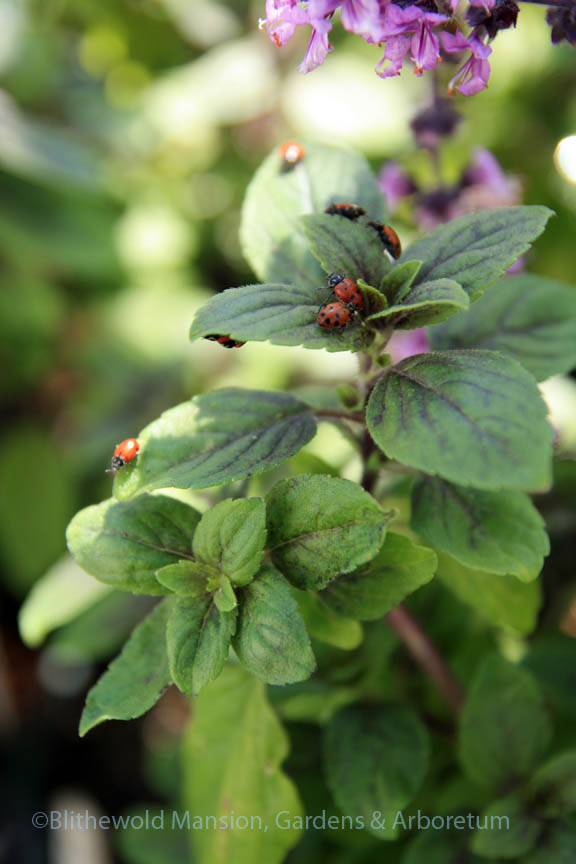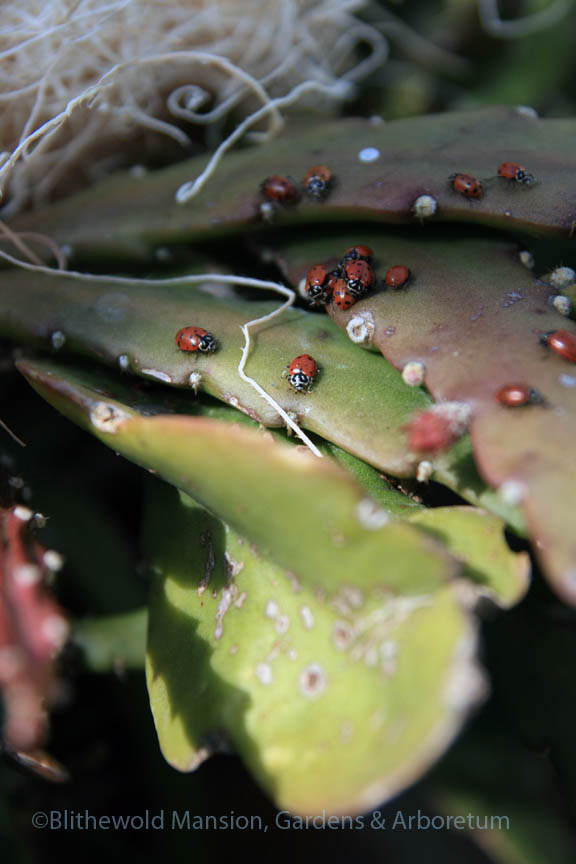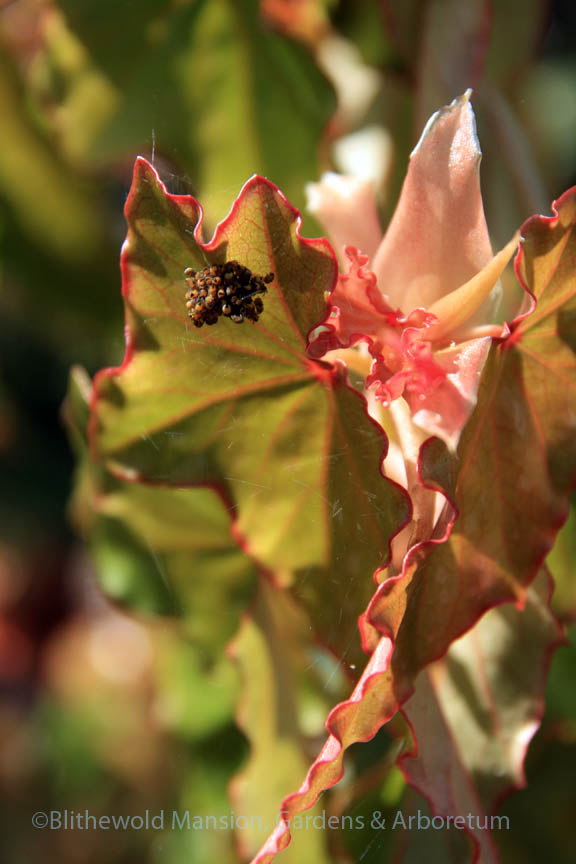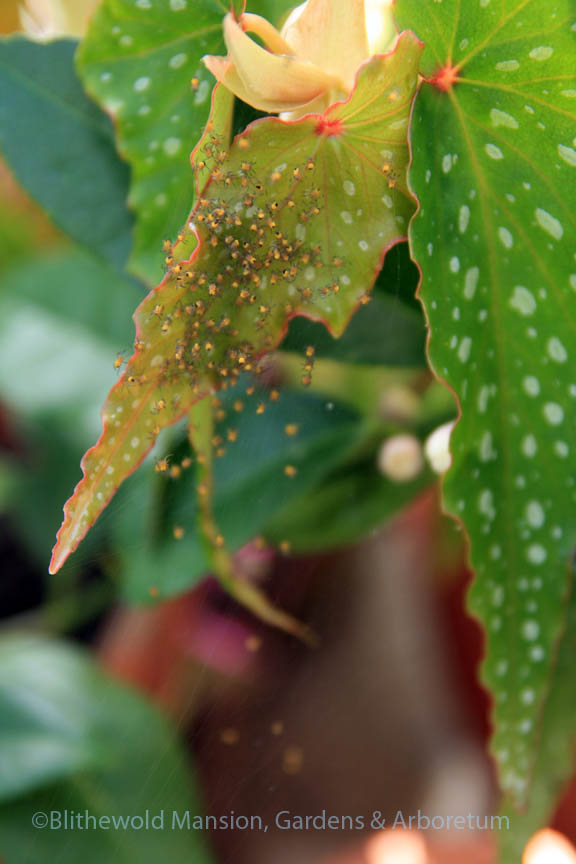It’s a bug-eat-bug greenhouse
Gail and I have talked about using biological controls (getting “good bugs” to eat the “bad bugs” that eat the plants) in the greenhouse but aside from trying to not crash through spider webs on our watering and grooming rounds, and occasionally overwintering praying mantis egg cases in hopes of an early spring hatch, we’ve never tried it. Until now. Our good friend Crystal Brinson dropped off 3 bags of lady bugs this week and already the greenhouse seems tidier. And livelier. According to the package, our ladybugs (Hypodamia convergens) can each eat up to 5000 aphids and then lay eggs that hatch into alligator look-alike larvae that will eat their way to adulthood. Already our releaselings are looking … busy … and should be laying eggs near aphid infestations though I haven’t spotted any just yet.
The same day the ladybugs were released Gail noticed evidence of nature’s own IPM: brand new clusters of baby common or European garden spiders (Araneus diadematus). They look much too tiny to tackle any full grown flying aphids but they’re already busy stringing webs and no doubt a flash mob (the barest vibration scatters them into action) could make quick work of any prey bigger than they are. I’m thrilled to have two such excellent reasons to hold off spraying insecticidal soap on our aphid and whitefly infested plants.
Have you ever released ladybugs in the garden? Do you have any overwintering in your house? (Crystal says, no worries if you do. They’ll find their way out again the same way they came in.) Any chance they keep your houseplants aphid free?




